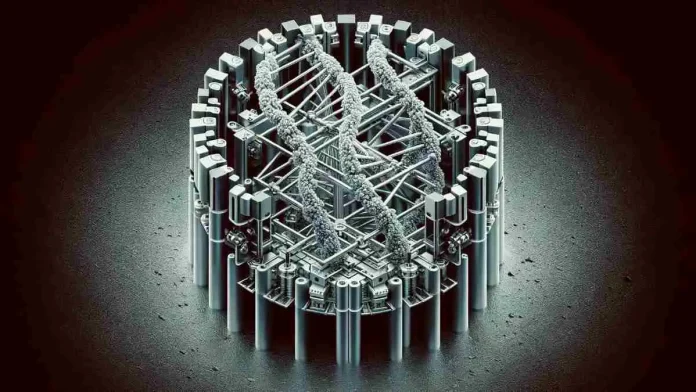The realm of nanotechnology has witnessed a groundbreaking feat as researchers unveiled programmable nanoscale robots adept at manipulating DNA fragments to create innovative ultraviolet-welded nanomachines. These nanobots, crafted from a mere four DNA strands and measuring a mere 100 nanometers in diameter, signify a colossal leap in the miniaturization of robotics. To grasp the magnitude of their scale, envision a thousand of these robots seamlessly spanning the width of a single strand of human hair.
1. Features and Capabilities
These diminutive but extraordinary nanobots possess a remarkable capability: they can seize minuscule DNA fragments and meticulously assemble them into intricate nanomachines, even replicas of themselves. Unlike their predecessors limited to two-dimensional shapes, these innovative robots boast multi-axis precise folding and positioning, empowering them to maneuver within three-dimensional space with unparalleled freedom.
2. Advancements Over Previous Nanoscale Robots
This recent breakthrough, pioneered by a collaboration between New York University, Ningbo Institute of Materials Technology & Engineering, and the Chinese Academy of Sciences, outshines earlier models in their precision and versatility. Their capability to navigate three-dimensional spaces has unlocked a vast array of possibilities in nanoscale engineering.
3. Applications in Biotechnology
Envision the potential implications in biotechnology, where these nanobots could revolutionize drug synthesis, enzyme production, and various chemical processes within human cells. Their ability to self-replicate entire three-dimensional structures and functionalities opens doors to unprecedented advancements in medical science and molecular engineering.
4. Challenges and Limitations
However, these remarkable nanobots, despite their programmability, rely on external controls such as temperature and ultraviolet radiation for their functioning. Moreover, the critical barrier remains their inability to replicate without precise DNA fragments, thus posing a considerable challenge to their autonomous proliferation.
5. Implications and Future Prospects
While this innovation underscores a remarkable leap in nanoscale robotics, it prompts contemplation about potential risks, notably the “grey goo” revelation. Nonetheless, it portrays an imminent future where such technologies might wield an astounding impact on various industries.
In conclusion, the demonstration of these programmable nanoscale robots marks an extraordinary milestone in the convergence of nanotechnology and robotics. Their capabilities hint at a future brimming with possibilities, albeit with potential challenges that warrant meticulous consideration.
6. FAQs (Frequently Asked Questions)
No, these nanobots require external controls like temperature and ultraviolet radiation to operate and assemble DNA fragments.
Currently, the nanobots face a hindrance in replicating themselves or anything else due to the requirement of precise DNA fragments.
These nanobots hold promise in revolutionizing drug production, enzyme synthesis, and various chemical processes within human cells.
Unlike previous nanobots limited to two-dimensional shapes, these new robots exhibit multi-axis precise folding and positioning, enabling navigation in three-dimensional spaces.
While showcasing immense potential, these nanobots raise concerns about potential risks, such as the “grey goo” revelation, which warrants careful consideration.


[…] Programmable Nanoscale Robots: Revolutionizing Biotechnology […]